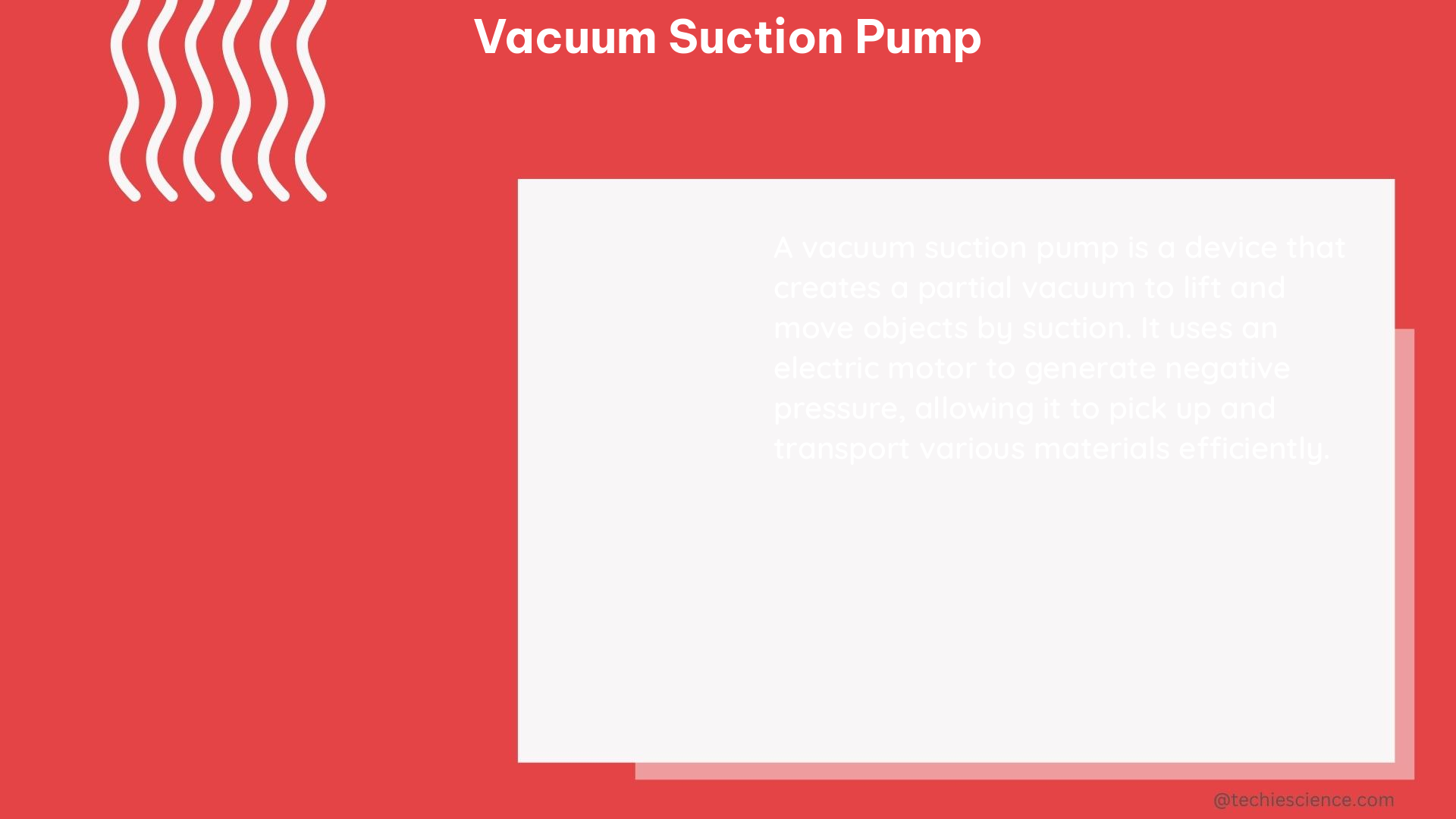Vacuum suction pumps are essential equipment in various industries and laboratory settings, playing a crucial role in creating and maintaining a vacuum for a wide range of applications, including analytical purposes, material handling, and chemical processing. The evolution of vacuum pump technology has significantly impacted their performance, efficiency, and environmental impact, making them an increasingly important tool in modern scientific and industrial operations.
Technical Specifications of Vacuum Suction Pumps
Vacuum suction pumps are characterized by several key technical specifications that determine their suitability for different applications:
-
Pumping Speed: This refers to the volume of gas that the pump can move in a given time, typically measured in liters per minute (L/min) or cubic feet per minute (CFM). High pumping speeds are essential for applications that require rapid evacuation of large volumes, such as in material handling or industrial processes.
-
Ultimate Vacuum: This represents the lowest achievable pressure that the pump can reach, often expressed in pascals (Pa) or microns of mercury (µmHg). The ultimate vacuum is a critical factor in applications that require high-vacuum environments, such as in analytical instrumentation or thin-film deposition.
-
Power Consumption: Measured in watts (W) or horsepower (HP), power consumption is an important consideration, as it affects the pump’s energy efficiency and operating costs. Energy-efficient vacuum pumps can significantly reduce the overall energy footprint of a facility.
Advancements in Vacuum Pump Technology

The evolution of vacuum pump technology has led to significant improvements in these key specifications. Modern vacuum pumps can now achieve ultimate vacuums as low as 10^-9 mbar, far surpassing the 10^-3 mbar achievable by older models. Pumping speeds have also increased dramatically, with some pumps capable of handling thousands of liters per minute.
One notable development in vacuum pump technology is the introduction of oil-free pumps. Traditional vacuum pumps rely on oil for lubrication and sealing, which can lead to contamination and environmental concerns. Oil-free pumps, on the other hand, use alternative methods such as dry screws, dry scrolls, or magnetic bearings to eliminate the need for oil. This results in cleaner processes and reduced environmental impact, as there is no need for oil disposal or the risk of oil leaks.
Example: ISP Oil-Free Vacuum Design
The ISP Oil-Free Vacuum Design is an example of an advanced oil-free vacuum pump that delivers “clean” processes and “green” results by eliminating the need for oil. This design offers several benefits, including:
- Reduced Maintenance: The absence of oil eliminates the need for regular oil changes and disposal, reducing maintenance requirements and costs.
- Lower Operating Costs: Oil-free operation leads to lower energy consumption and reduced operating expenses.
- Improved Process Reliability: The elimination of oil-related contamination ensures more consistent and reliable vacuum performance.
DIY Vacuum Suction Pumps
For those interested in constructing their own vacuum suction pumps, there are several DIY options available. One example is the inexpensive recirculating water vacuum pump described in a recent study. This pump was constructed from readily available materials, including a 3D-printed water aspirator pump and a standard laboratory faucet connection.
The performance of this DIY vacuum pump was found to be comparable to commercial models, with a total cost (excluding the cost of a 3D printer and filament) of approximately $44. This demonstrates the potential for individuals to create effective vacuum suction pumps using relatively simple and affordable components.
Conclusion
Vacuum suction pumps have evolved significantly over the years, with advancements in high vacuum technology, corrosion resistance, vacuum control, and energy efficiency. These improvements have led to the development of more efficient, eco-friendly, and reliable pumps, with specifications that far surpass those of older models.
Whether you’re working in a laboratory, an industrial setting, or exploring DIY projects, understanding the technical specifications and advancements in vacuum pump technology is crucial for selecting and utilizing these essential tools effectively.
Reference:
– Evolution of the Laboratory Vacuum Pump
– Inexpensive Recirculating Water Vacuum Pump
– DIY Vacuum Pump Design

The lambdageeks.com Core SME Team is a group of experienced subject matter experts from diverse scientific and technical fields including Physics, Chemistry, Technology,Electronics & Electrical Engineering, Automotive, Mechanical Engineering. Our team collaborates to create high-quality, well-researched articles on a wide range of science and technology topics for the lambdageeks.com website.
All Our Senior SME are having more than 7 Years of experience in the respective fields . They are either Working Industry Professionals or assocaited With different Universities. Refer Our Authors Page to get to know About our Core SMEs.